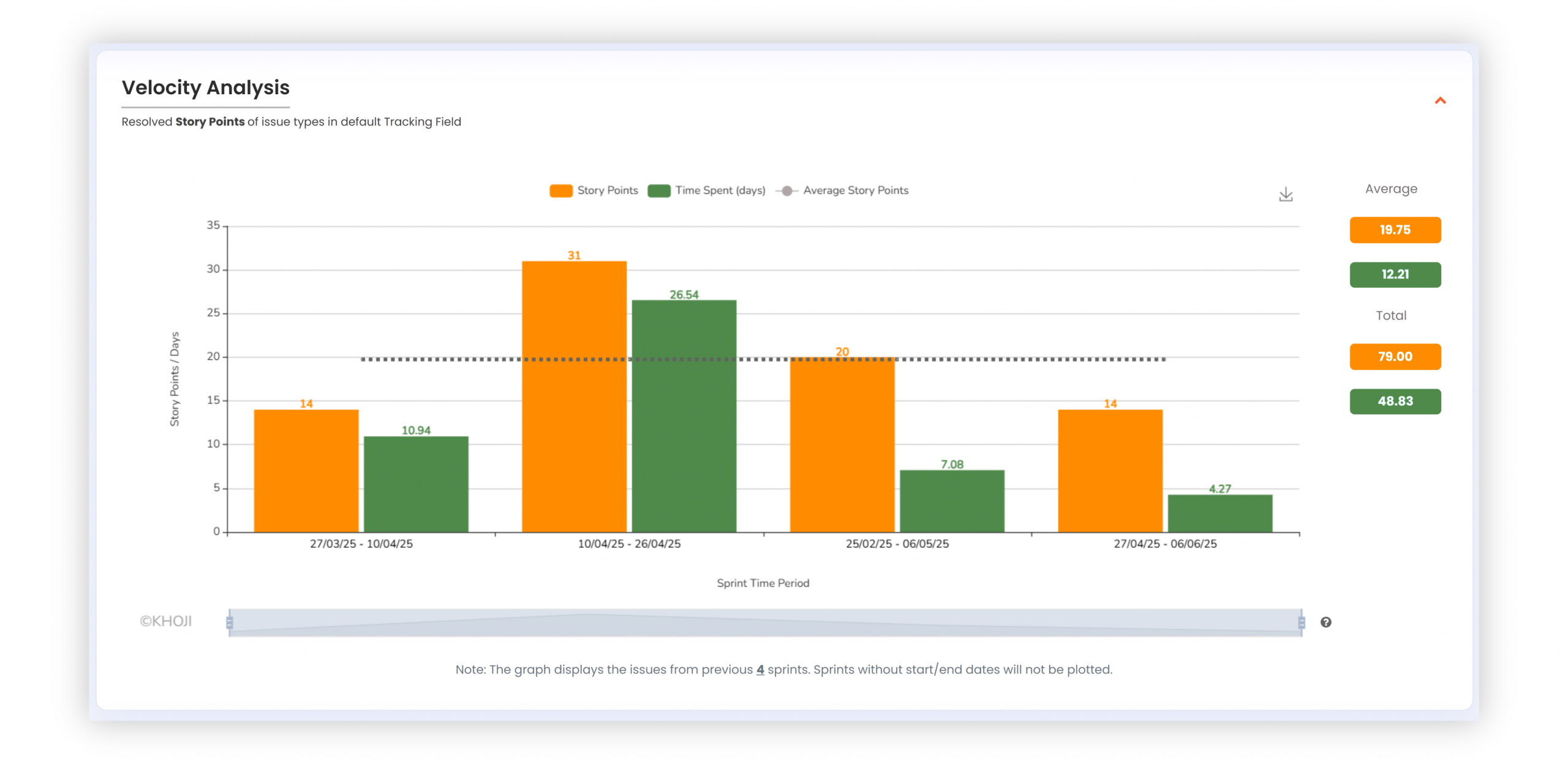“Velocity is not a performance target. It’s a conversation starter.”
— Mike Cohn, Agile Coach & Author
In 2025, Agile velocity is no longer just a number you check at the end of a sprint.
It’s evolved into a dynamic indicator of team health, decision quality, and delivery behavior.
For over a decade, velocity has helped teams answer a basic question:
“How much are we delivering each sprint?”
But today’s most effective Agile organizations are going deeper.
Now they ask:
“What does our velocity mean, and how can we use it to make smarter, faster, and healthier decisions?”
This isn’t just a shift in tooling; it’s a shift in thinking.
And tools like Khoji are making that shift not only possible, but practical by making it easy to analyze trends, compare behaviors across sprints, and plan with confidence.
Let’s break down the five biggest trends redefining velocity in 2025.
Trend #1: From Scoreboard to Signal
In the early years of Agile adoption, velocity was often misused and treated as a scoreboard for productivity.
If the number went up, the team was “performing.” If it dipped, alarms went off. But that approach is now obsolete.
64% of Agile teams now use metrics primarily for continuous improvement rather than reporting output (Source: 13th State of Agile Report).
Teams are shifting the question from “Did we hit our target?”
To “What can our velocity tell us about how we work?”
Now they ask:

Tools like Khoji surface these patterns across configurable sprint windows, turning delivery metrics into meaningful discussions.

Trend #2: Context Is the New Baseline
In 2025, teams no longer measure velocity in isolation. High-performing teams compare current delivery against:

Why? Because velocity without context leads to poor planning and unrealistic expectations.
Platforms like Khoji allow teams to select how many past sprints to include in their analysis, typically four to six, so comparisons are always grounded in real-world performance rather than hypothetical targets.
Pro Tip: It’s not about higher velocity; it’s about informed velocity.
Trend #3: Real-Time Velocity Is Driving Mid-Sprint Agility
Previously, velocity was only reviewed during retrospectives. By then, any lessons were already late.
In 2025, the best teams are making velocity an in-sprint decision-making tool, not just a report.
They use real-time velocity comparisons to:

Khoji’s live tracking of current sprint velocity versus historical data enables fast, informed pivots that keep delivery aligned without overburdening the team.
This is where velocity becomes operational intelligence rather than just reporting.
Trend #4: Teams Want Detail, Not Just Dashboards
High-level velocity charts still serve a purpose, but today’s teams want to dig deeper.
Especially in scaled Agile or cross-functional environments, leaders need to understand:

This level of insight is crucial for diagnosing why delivery patterns shift, not just acknowledging that they did.
Trend #5: Velocity Is Becoming a Team Health Indicator
Perhaps the most human shift in 2025?
Teams are finally connecting velocity trends with team well-being.
A sudden dip in velocity? It’s no longer seen as a failure. It’s a sign to ask:

Modern tools like Khoji help identify these trends early, enabling leaders to create a more sustainable pace, not just faster sprints.
The Future of Velocity Isn’t Faster—It’s Smarter.
Agile has always been about adapting to change. Now, our metrics are adapting, too.
In 2025, velocity isn’t a finish line. It’s a feedback loop.
It’s not about chasing higher numbers; it’s about uncovering why things happen and deciding what to do next.
With tools like Khoji, teams can finally move from guesswork to guidance by analyzing the past, navigating the present, and planning for the future with confidence.
📈 Ready to see your team’s delivery trends in a new light?
Start by analyzing your last few sprints with Khoji and discover what your story points are really telling you.

